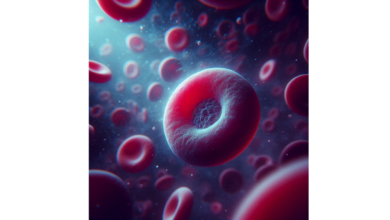is plaque on teeth permanent

is plaque on teeth permanent – Understanding oral health is essential for everyone, especially when it comes to plaque, a common yet significant concern. Believe it or not, plaque is more than just an ugly film on your teeth; it can seriously affect your overall dental health and even your general well-being.
The Sticky Truth about Plaque
You might recall a time when you forgot to brush after a particularly long day. That thin layer of film you felt on your teeth wasn’t just annoying; it was plaque starting to form. Here’s a quick rundown of plaque:
- Definition: It’s a sticky substance composed of bacteria, food particles, and saliva.
- Formation: Plaque develops within hours after brushing, showcasing how diligence in dental care is necessary.
- Risks: If left untreated, it can lead to tartar, cavity formation, and gum disease.
Like many people, I used to underestimate the importance of maintaining a proper oral hygiene routine. After a few painful dental visits due to plaque build-up, I quickly realized the impact it could have on my daily life, from eating to simply smiling at friends. In this article, we’re going to explore the ins and outs of plaque, its causes, effects, and more importantly, how you can keep your smile bright and healthy. Whether you’re seeking to enhance your routine or battling stubborn plaque, understanding this dental enemy is the first step!
What Causes Plaque Build-Up
Now that we’ve grasped the importance of maintaining oral health, let’s dive deeper into what actually causes plaque build-up. Understanding the triggers of plaque can empower you to take proactive steps in your dental care routine.
The Role of Bacteria
At its core, plaque is primarily a result of bacteria that naturally inhabit your mouth. These bacteria thrive on sugars and starches from the foods you eat. When you skip brushing or don’t floss regularly, these bacteria can multiply rapidly and form a sticky layer on your teeth. Common culprits for plaque buildup include:
- High-sugar foods: Candy, sodas, and even sweetened beverages can lead to increased plaque formation.
- Starchy snacks: Chips and bread break down into sugars that feed bacteria.
- Poor oral hygiene: A lack of brushing and flossing creates an ideal environment for plaque to thrive.
I once enjoyed a late-night snack of cookies without following it up with my usual brushing routine. The next morning, I felt a noticeable difference in my mouth—definitely a wake-up call about the effects of my food choices combined with neglecting my oral hygiene!
Genetic Factors and Dry Mouth
Additionally, genetic predispositions and conditions such as dry mouth (xerostomia) can contribute to increased plaque formation. Saliva plays a crucial role in neutralizing acids produced by bacteria, and a lack of it can exacerbate plaque issues. Recognizing these causes can help you make more informed decisions about your dental habits and dietary choices.
Effects of Untreated Plaque
Understanding what causes plaque build-up is crucial, but equally important is recognizing what happens when plaque goes untreated. It’s easy to dismiss that slight discomfort or discoloration as a minor issue, but the consequences can escalate quickly.
From Plaque to Tartar
When plaque is left to its own devices, it hardens into tartar (also known as calculus) within just a few days. Tartar is much tougher to remove and requires professional dental cleaning. Here’s a quick look at the effects of untreated plaque:
- Gum Disease: Untreated plaque can lead to gingivitis, the early stage of gum disease. Symptoms like swollen or bleeding gums are often the first signs.
- Cavities: The bacteria in plaque produce acids that erode tooth enamel, leading to cavities if not managed.
- Bad Breath: A growing bacterial colony can produce an unpleasant odor, resulting in chronic bad breath (halitosis).
I remember neglecting a small area of plaque on a back tooth, thinking it was nothing serious. Before I knew it, I had a painful cavity and a lecture from my dentist. It was a harsh lesson about the ripple effects of ignoring oral hygiene.
Wider Health Implications
Moreover, research suggests that untreated plaque can influence overall health, potentially leading to cardiovascular issues and worsening diabetes management. Recognizing these serious effects can motivate you to stay committed to your oral hygiene regimen—your smile (and health) will thank you!
How to Prevent Plaque
Now that we’re aware of the effects of untreated plaque, let’s shift our focus to prevention. The good news is that with the right habits and care, plaque can be effectively managed, allowing you to maintain a healthy smile.
Proper Dental Hygiene
First and foremost, practicing proper dental hygiene is paramount. This means you should adopt a solid oral care routine that includes:
- Brushing Twice a Day: Use fluoride toothpaste and a soft-bristled toothbrush. Make sure to brush for at least two minutes, covering all surfaces of your teeth.
- Flossing Daily: Flossing rids your mouth of food particles and plaque that can settle between teeth, where your toothbrush can’t reach.
- Using Mouthwash: Incorporating an antibacterial mouthwash can help kill bacteria and freshen breath after brushing.
I vividly remember a friend who started flossing regularly after having braces. She noticed such a difference in her oral health that it became a non-negotiable part of her routine!
Regular Dental Check-Ups
In addition to a robust home care routine, regular dental check-ups are essential. Most dental professionals recommend visits every six months. These visits allow for:
- Professional Cleanings: Dental hygienists can remove tartar and plaque that brushing and flossing might miss.
- Early Detection: Your dentist can catch early signs of gum disease or cavities, ultimately saving you time, money, and pain.
In my experience, those routine check-ups can feel tedious, but they are crucial for long-term oral health. Investing time in prevention today can save you significant trouble down the line. Together, these strategies equip you with the tools to prevent plaque and keep your smile shining bright!
Is Plaque Reversible?
After discussing how to prevent plaque accumulation, it’s crucial to address a question many people ponder: Is plaque reversible? The short answer is yes—at least in its initial stages. Understanding the reversibility of plaque can give you hope and motivation to maintain your oral hygiene practices.
Early-Stage Plaque
In the early stages, plaque is soft and can easily be removed through diligent brushing and flossing. If you’ve been proactive with your oral care, congratulations! Your efforts can effectively reverse the formation of plaque. To help manage and reverse early plaque build-up:
- Brush your teeth regularly: Aim for twice a day as your baseline.
- Floss daily: This is crucial for removing plaque between teeth.
- Keep up with mouthwash: An antibacterial mouthwash can assist in plaque control.
I remember a time when I became diligent about my dental routine after reading about how easily plaque can accumulate. The sense of relief I felt during my next dental appointment, hearing that my plaque levels had decreased, was incredibly rewarding!
Advanced Plaque and Tartar
However, once plaque hardens into tartar, it’s another story. Tartar can’t be reversed through home care methods alone; it requires professional cleaning. Recognizing the urgency of plaque management early on can save you from larger issues down the line. So, while some plaque is reversible with the right habits, prevention remains your best bet! Keep that toothbrush handy and prioritize your routine for a healthier mouth.
Treatment Options for Stubborn Plaque
Having established that plaque is reversible in its early stages, let’s now shift our focus to treatment options for those instances where plaque has become stubborn or has hardened into tartar. It’s frustrating when home care isn’t enough, but don’t worry—there are effective solutions available.
Professional Dental Cleaning
The most reliable treatment for stubborn plaque is a professional dental cleaning. During these appointments, your dentist or dental hygienist will use specialized instruments to remove tartar and plaque that regular cleaning can miss. Key benefits of professional cleaning include:
- Thorough Removal: Dental professionals can reach areas that are difficult to clean at home.
- Spotting Issues Early: Your dentist can identify early signs of gum disease or cavities to help prevent more severe problems.
I recall a time when I thought my teeth felt clean enough at home, only to discover I was wrong. The professional cleaning refreshed my mouth and made such a difference in how I felt overall!
Scaling and Root Planing
For more advanced cases, particularly when gum disease is a concern, scaling and root planing may be recommended. This deep-cleaning procedure involves:
- Removing Plaque and Tartar Below the Gum Line: This addresses any build-up that can lead to gum disease.
- Smoothing the Roots of Your Teeth: This helps to create a cleaner surface and makes it more difficult for plaque to adhere.
Remember, while home care is essential, there’s no shame in seeking professional help when plaque becomes more than just a minor inconvenience. Don’t hesitate to consult your dental provider for the best approach to maintaining a healthy mouth!
Natural Remedies for Plaque Removal
Now that we’ve explored treatment options for stubborn plaque, you might be interested in natural remedies that can help manage and even prevent plaque build-up. Many people prefer these methods due to their accessibility and the desire for more holistic oral care.
Effective Natural Ingredients
If you’re looking to enhance your dental routine with natural remedies, consider incorporating the following ingredients into your regimen:
- Baking Soda: Known for its mild abrasive properties, baking soda can help scrub away plaque when used as a toothpaste alternative. Just mix it with water to form a paste and brush gently.
- Apple Cider Vinegar: This can act as a natural disinfectant. Dilute it with water and swish it in your mouth, but be cautious, as it can be acidic. Rinse with water afterward to protect your enamel.
- Coconut Oil: Oil pulling with coconut oil can reduce bacteria in the mouth. Swish a tablespoon of oil around for about 15-20 minutes and then spit it out.
I personally began using baking soda in my routine after hearing about its effectiveness. The fresh feeling it left behind was a delightful surprise!
Herbs and Spices
Additionally, herbs like parsley and spices like cinnamon possess antibacterial properties. Chewing on fresh parsley or mixing cinnamon with your toothpaste can also add a flavorful twist to your oral care. While these natural remedies can be beneficial, they should complement, not replace, your regular dental hygiene practices. Always consult with your dentist for personalized advice tailored to your needs!
Professional Dental Cleaning Techniques
Having discussed natural remedies for plaque removal, it’s important to highlight the power of professional dental cleaning techniques. These treatments are essential in ensuring that plaque and tartar are effectively managed, especially when home care isn’t enough.
Common Techniques Used by Dental Professionals
When you visit a dental office for a cleaning, here are some of the techniques you can expect:
- Ultrasonic Scaling: This uses high-frequency sound waves to break down tartar and plaque quickly. It’s effective and often less abrasive than traditional scraping methods.
- Manual Scaling: Your dental hygienist uses specialized tools to meticulously scrape away plaque and tartar from each tooth, especially in hard-to-reach areas.
- Polishing: After plaque removal, your dentist usually polishes your teeth with a gritty paste. This smooths the surface and makes it more difficult for plaque to adhere.
I fondly recall my first experience getting a dental cleaning using ultrasonic scaling. The sensation was different, yet effective, and I left the office feeling like I had a brand-new smile!
Fluoride Treatments and Sealants
In addition to these cleaning techniques, dentists may also apply fluoride treatments or sealants as a preventive measure. Fluoride strengthens enamel and reduces the risk of cavities, while sealants provide an extra layer of protection against plaque accumulation, particularly in hard-to-reach areas. Regular professional cleanings not only help remove existing plaque but also set the foundation for better oral health. Investing in these sessions ensures you maintain a brighter, healthier smile!
Dietary Habits and Plaque Formation
Having explored the professional cleaning techniques that help combat plaque build-up, it’s essential to recognize the role of your dietary habits in plaque formation. What you eat significantly influences your oral health, and being mindful of your choices can help in managing plaque effectively.
The Role of Sugar and Carbohydrates
First and foremost, sugar is one of the primary culprits when it comes to plaque formation. Bacteria in your mouth thrive on sugar and carbohydrates, producing acids that attack tooth enamel. Consider these dietary factors:
- Sugary Snacks: Candy, cookies, and sugary drinks provide a feast for plaque-forming bacteria.
- Starchy Foods: Chips, bread, and pasta break down into sugars as you eat, leading to similar issues.
I remember a period when my snacking habits took a toll on my dental health. After indulging in too many sugary treats, my next dental visit revealed a couple of cavities. It was a wake-up call to make better snack choices!
Healthy Alternatives
But fear not—there are plenty of tooth-friendly foods you can incorporate into your diet:
- Crunchy Fruits and Vegetables: Apples, carrots, and celery can help scrub your teeth as you chew.
- Dairy Products: Cheese and yogurt are rich in calcium and can neutralize acids in your mouth.
- Green Tea: This contains compounds that may help reduce plaque-causing bacteria.
By becoming more conscientious about your food choices, you not only enjoy a healthier diet but also foster a more hospitable environment for your teeth. Keep these dietary habits in mind, and you’ll be on your way to a plaque-free smile!
Impact of Plaque on Overall Health
Now that we’ve touched upon dietary habits and their influence on plaque formation, it’s crucial to expand our discussion to the broader impact of plaque on overall health. You might be surprised to learn that the consequences of neglecting plaque can extend far beyond your mouth.
Connection Between Oral Health and Body Health
Research has shown a strong link between oral health and systemic health. When plaque builds up and leads to periodontal disease, it can trigger a series of other health issues. Some potential health risks include:
- Cardiovascular Disease: Inflammation and bacteria from gum disease may enter the bloodstream, potentially leading to heart problems.
- Respiratory Issues: Bacteria from the mouth can be inhaled into the lungs, increasing the risk of respiratory infections.
- Diabetes Complications: Plaque and gum disease can make it harder for diabetics to control their blood sugar levels.
I recall a family member who had recurring gum issues and later discovered they were linked to his heart condition. It was a startling reminder of how interconnected our body systems are!
Mental Health Considerations
Additionally, neglecting oral health can take a toll on mental well-being. Poor oral hygiene often leads to embarrassment and social withdrawal, potentially impacting self-esteem and stress levels. Recognizing the impact of plaque on overall health should motivate you to prioritize your oral hygiene routine. By taking care of your mouth, you’re not only protecting your smile but also investing in your holistic health. Don’t underestimate the power of prevention!
Signs of Severe Plaque Build-Up
Having discussed the broader health implications of plaque, let’s focus on recognizing the signs of severe plaque build-up. It’s essential to be aware of these indicators so you can take action before complications arise. Fortunately, being proactive can save you from unnecessary pain and inconvenience.
Identifying Common Symptoms
Severe plaque build-up often leads to more serious oral issues, and you might notice the following signs:
- Persistent Bad Breath (Halitosis): If your breath remains unpleasant despite good oral hygiene, this could indicate plaque accumulation.
- Swollen or Bleeding Gums: Gums that bleed when brushing or flossing are a telltale sign of gum disease, often linked to heavy plaque.
- Tooth Sensitivity: Increased sensitivity to hot, cold, or sweet foods may suggest that plaque is attacking your enamel.
- Visible Tartar: If you can see yellow or brown deposits on your teeth, that’s tartar, a hardened form of plaque.
I remember experiencing swollen gums after a few weeks of neglecting my dental care routine. It wasn’t until I noticed blood on my toothbrush that I decided to make an appointment!
Seeking Professional Help
If you notice any of these symptoms, don’t delay seeking professional help. Your dentist can provide a thorough assessment and help you get back on track with effective cleaning and care. Paying attention to these signs can help you maintain a healthy mouth and overall well-being, so never hesitate to listen to your body!
XII. Understanding Tartar Formation
Now that we’ve covered the signs of severe plaque build-up, it’s important to delve into tartar formation—an unfortunate byproduct of plaque that can seriously affect your oral health. Understanding how tartar develops will empower you to take proactive measures in your oral care routine.
What is Tartar?
Tartar, also known as calculus, is a hardened form of plaque that can form on your teeth if plaque is not removed within 24 to 72 hours. It’s composed of mineral salts, bacteria, and food particles, leading to a rough surface that can harbor even more plaque. Key points about tartar formation:
- Formation Process: Initially, plaque is soft and can be brushed away. However, once it mineralizes and hardens, it becomes tartar, often requiring professional removal.
- Color Change: Tartar can appear yellow or brown, making it noticeable and unsightly.
I can recall my own experience when I first discovered tartar on my teeth. The rough surface and discoloration made me self-conscious and motivated me to stay more consistent with my oral hygiene.
The Risks of Tartar
Tartar can lead to further dental complications, including cavities and gum disease. It creates an environment where plaque can thrive, making it harder to maintain good oral health. Recognizing the importance of regular brushing, flossing, and professional cleanings helps keep tartar at bay. Understanding tartar formation is just one more step in the journey to achieving and maintaining a healthy smile!
XIII. Maintaining Oral Health Post-Plaque Removal
With a better understanding of tartar formation and its implications for your oral health, let’s explore how to maintain that fresh, plaque-free feeling after a dental cleaning. Once you’ve gotten rid of plaque and tartar, the real challenge begins—keeping your teeth healthy and maintaining good habits.
Establishing a Solid Oral Care Routine
To prevent plaque from returning, consistency is key. Here are some effective habits to integrate into your daily routine:
- Brush Twice Daily: Make it a point to brush your teeth for a full two minutes, especially in the morning and before bed.
- Floss Daily: Don’t overlook the spaces between your teeth! Flossing removes food particles and plaque that your toothbrush may miss.
- Use an Antibacterial Mouthwash: This can help kill bacteria and freshen your breath while providing an extra layer of protection against plaque.
I remember feeling so invigorated after a professional cleaning that I decided to really up my dental game. Investing in an electric toothbrush improved my brushing technique and kept me motivated.
Regular Dental Visits and Dietary Choices
Additionally, don’t forget the importance of visiting your dentist regularly—every six months is a good rule of thumb. Furthermore, watch your dietary habits by limiting sugary snacks and incorporating tooth-friendly foods like fruits, vegetables, and dairy. By committing to these practices, you’ll pave the way for a healthier mouth and minimize the chances of plaque and tartar returning. Your smile deserves consistent care!
XIV. Conclusion
Having explored the intricate world of plaque, tartar, and the various strategies for maintaining optimal oral health, it’s clear that taking charge of your dental hygiene is essential. The journey doesn’t end with treating plaque; it’s a continuous commitment to your overall well-being.
Recap of Key Points
To wrap things up, let’s recap some of the crucial points we’ve discussed:
- Understanding Plaque and Tartar: Recognizing their formation and impacts paves the way for better prevention.
- Prevention Strategies: From proper dental hygiene practices to maintaining healthy dietary habits, you have the tools needed to fight back against plaque.
- Professional Care: Regular dental check-ups and cleanings play a pivotal role in managing and preventing plaque-related issues.
Reflecting on my own journey, I can’t stress enough how investing in my dental health has transformed my overall confidence and comfort. There was a time I ignored my oral hygiene, which led to painful visits, but choosing to prioritize my care has made a world of difference.
Your Commitment Matters
Ultimately, the power to maintain a healthy smile lies in your hands. Stay consistent with your routines, be proactive about your health, and don’t hesitate to seek professional help if you notice any signs of plaque build-up. Remember, a radiant smile doesn’t just brighten your day—it enhances your life! Here’s to your journey towards lasting oral health!
You might also find this article helpful Building a Strong Foundation :Balanced Diet Enhances Your Health





